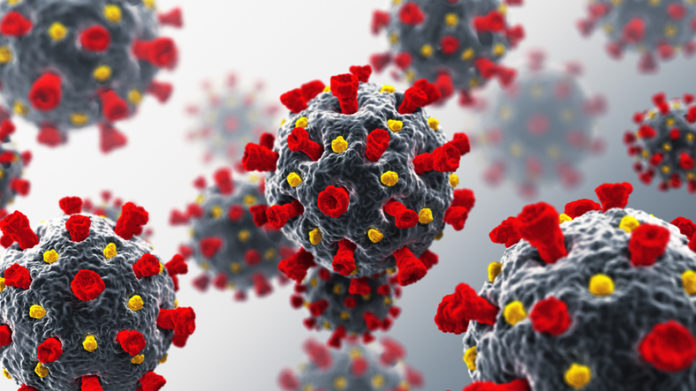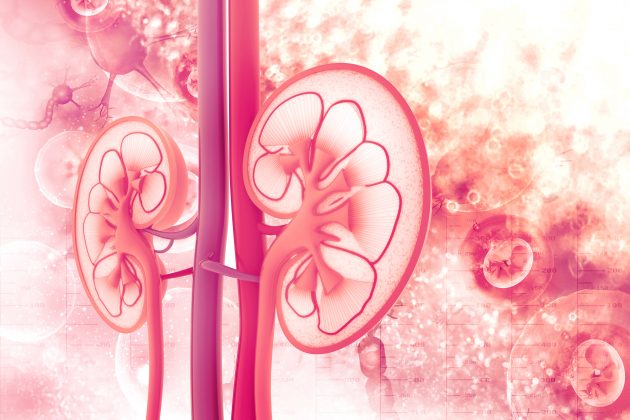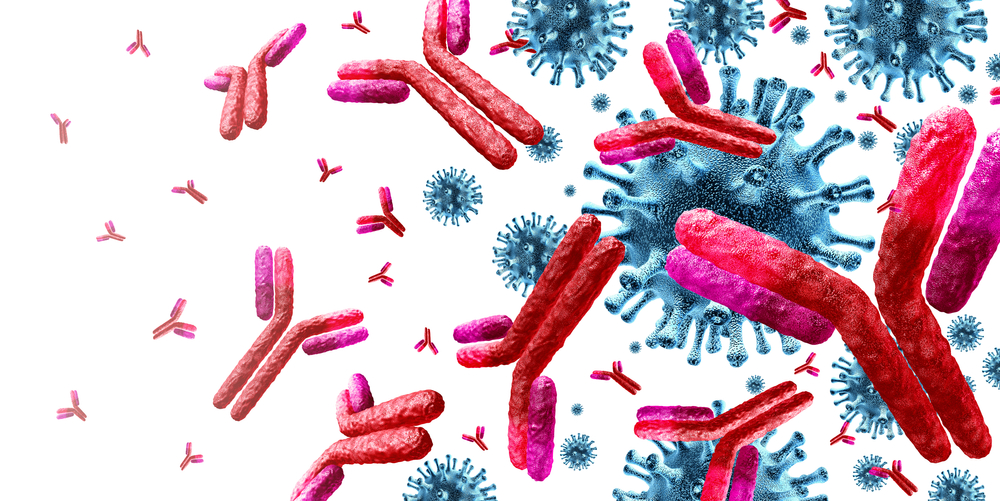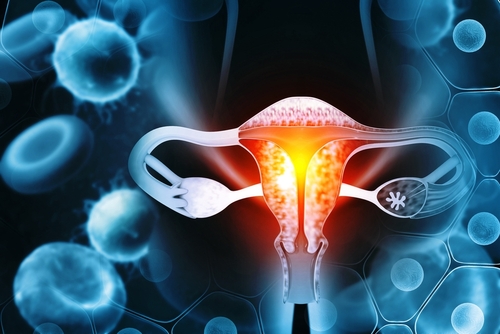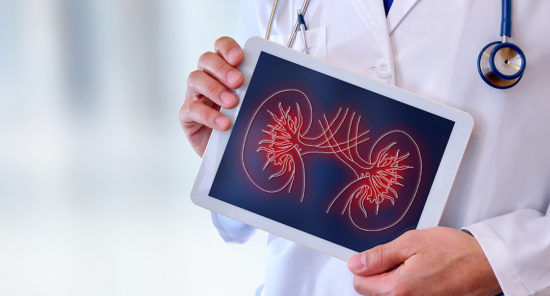Patients hospitalized with COVID-19 commonly develop acute kidney injury (AKI). AKI has been reported in 24% to 57% of COVID-19 hospitalizations and in 68% to 78% of patients with COVID-19 admitted to the intensive care unit (ICU). AKI is more severe in patients with COVID-19 compared with patients without COVID-19, and patients with COVID-19-associated AKI are more likely to require dialysis and less likely to regain kidney function while hospitalized, increasing the risk for incident chronic kidney disease (CKD) or progression of existing CKD.
There are few data available on intermediate- and long-term kidney outcomes following COVID-19-associated AKI. In early studies among survivors of COVID-19 and AKI, 32% of patients had not recovered baseline kidney function at a median of 21 days following hospital discharge.
James Nugent, MD, MPH, and colleagues conducted a retrospective cohort study to examine the association between COVID-19 in patients with AKI and the rate of change in estimated glomerular filtration rate (eGFR) over the 6 months following hospital discharge. The researchers sought to test the hypothesis that patients with AKI associated with COVID-19 are at increased risk for decrease in eGFR or worsening CKD after discharge compared with patients with AKI without COVID-19. Results of the study were reported online in JAMA Network Open [doi:10.1001/jamanetworkopen.2021.1095].
The study was conducted at five hospitals in Connecticut and Rhode Island from March 10, 2020, to August 31, 2020. Among patients who were tested for COVID-19 and developed AKI, those who survived past discharge, did not require dialysis within 3 days of discharge, and had at least one outpatient creatinine level measurement following discharge were eligible.
The primary outcome of interest, the association between AKI associated with COVID-19 and eGFR slope after discharge, was assessed using mixed-effects models. The secondary outcome was the time to AKI recovery for a subgroup of patients whose kidney function had not returned to baseline level by discharge.
The study population included 182 patients with COVID-19 who developed AKI and 1430 patients with COVID-19 who did not develop AKI. There were 813 women (50.4%), and median age was 69.7 years. Patients with COVID-19-associated AKI were more likely to be Black (73 [40.1%] vs 225 [15.7%]), or Hispanic (40 [22%] vs 126 [8.8%]), and had fewer comorbidities compared with patients with AKI not related to COVID-19. Rates of pre-existing chronic kidney disease and hypertension were similar between the two groups.
A higher proportion of patients with versus without COVID-19-associated AKI were excluded due to death during the index hospitalization (29.6% vs 11.3%). The two groups were similar in the proportions of patients excluded due to the need for dialysis therapy within 3 days of discharge (1.0% vs 0.7%) or lack of an outpatient creatinine measurement following discharge (46.5% vs 47.5%). For 34 patients who were excluded due to the need for dialysis at discharge, two of eight in the COVID-19-associated AKI group and six of 26 with AKI not associated with COVID-19 remained on dialysis 6 months postdischarge; an additional six patients without COVID-19-associated AKI died within 6 months of discharge. Of patients with AKI who had received a SARS-CoV-2 test, patients who were excluded due to lack of an outpatient creatinine measurement had fewer comorbidities compared with included patients. AKI stage, dialysis requirement, ICU admission, and AKI recovery were similar between groups.
Baseline creatinine level and eGFR were similar between patients with and without COVID-19-related AKI; patients in the COVID-19-related AKI group more commonly had proteinuria on presentation. Patients in the COVID-19-related AKI group were more likely to require dialysis, had longer hospital and ICU stays, and had higher rates of mechanical ventilation and vasopressor use. Prescriptions for angiotensin-converting enzyme inhibitor or angiotensin receptor blocker were similar in the two groups. Follow-up, defined as time from discharge to past outpatient creatinine measurement, was longer among patients with COVID-19-associated AKI. Patients without COVID-19-associated AKI had more outpatient creatinine measurements following discharge.
In the unadjusted mixed-effects model, the mean rate of decline in eGFR was –11.3 mL/min/1.73 m2 faster in patients with COIVD-19-associated AKI (95 % confidence interval [CI], –22.1 to –0.4 mL/min/1.73 m2). Following adjustment for baseline demographic characteristics and comorbidities, the difference in eGFR slope persisted (–12.4; 85% CI, –23.7 to –1.2 mL/min/1.73 m2). In the fully adjusted model, including baseline patient characteristics and comorbidities in addition to peak serum creatinine levels and dialysis requirements, patients in the COVID-19-associated AKI group continued to show an increase in the rate of eGFR decline (–14.0; 95% CI, –25.1 to –2.9 mL/min/1.73 m2).
By the time of hospital discharge, 82.4% of patients with COVID-19-associated AKI and 79.9% of patients without COVID-19-associated AKI had achieved AKI recovery. In the subset of patients who had not recovered at discharge (n=319), those in the COVID-19-associated AKI group had slower recovery after discharge compared with those in the group without COVID-19-associated AKI. There was an independent association between COVID-19-associated AKI and a lower rate of kidney recovery during outpatient follow-up (adjusted hazard ratio, 0.57; 95% CI, 0.35-0.92).
Limitations to the study findings cited by the authors included the need to exclude approximately 45% of patients with AKI in both groups due to lack of an outpatient measurement for creatinine level following hospital discharge.
In conclusion, the researchers said, “In this cohort study of US patients with and without COVID-19 who experienced in-hospital AKI, patients with COVID-19-associated AKI demonstrated faster rates of eGFR decreases after hospital discharge, independent of a patient’s baseline comorbidities or AKI severity. Identifying predictors of longitudinal eGFR decrease in patients with COVID-19-associated AKI may help prioritize which patients need closer outpatient follow-up during the pandemic. A better understanding of COVID-19-associated AKI should provide opportunities for clinical trials to improve outcomes and inform the guidelines of post-COVID-19-associated AKI outpatient management.”
Takeaway Points
- Researchers conducted a retrospective cohort study to compare the rate of change in estimated glomerular filtration rate (eGFR) between patients with COVID-19 and acute kidney injury (AKI) and patients with AKI without COVID-19.
- In the group with COVID-19-associated AKI, eGFR declined by 11.3 mL/min/1.73 m2 per year faster compared with the group with AKI without COVID-19 in the unadjusted mixed-effects model.
- Following adjustment for patient baseline demographic characteristics, comorbidities, and severity of AKI, the findings were similar.
Credit: Original article published here.

